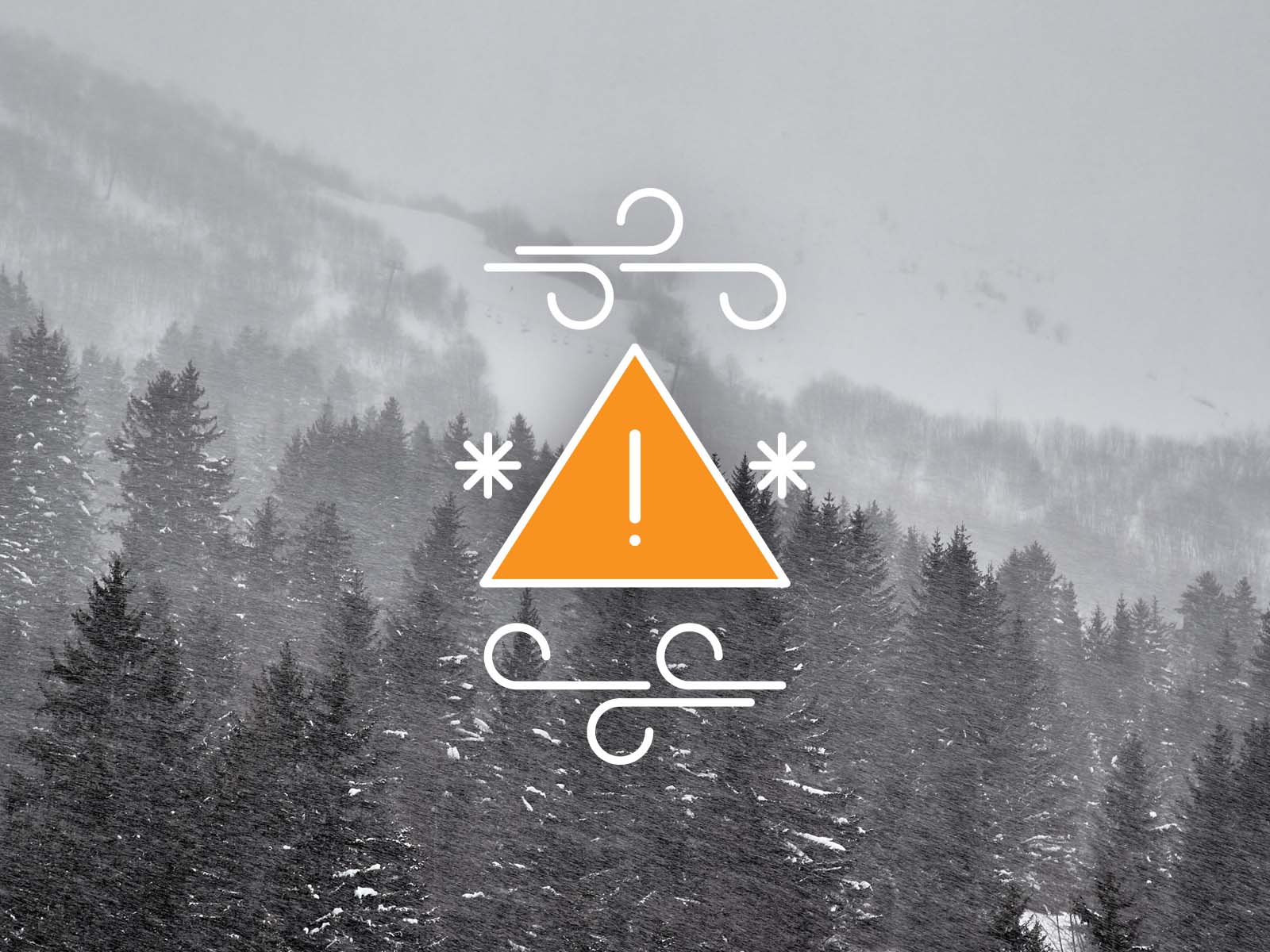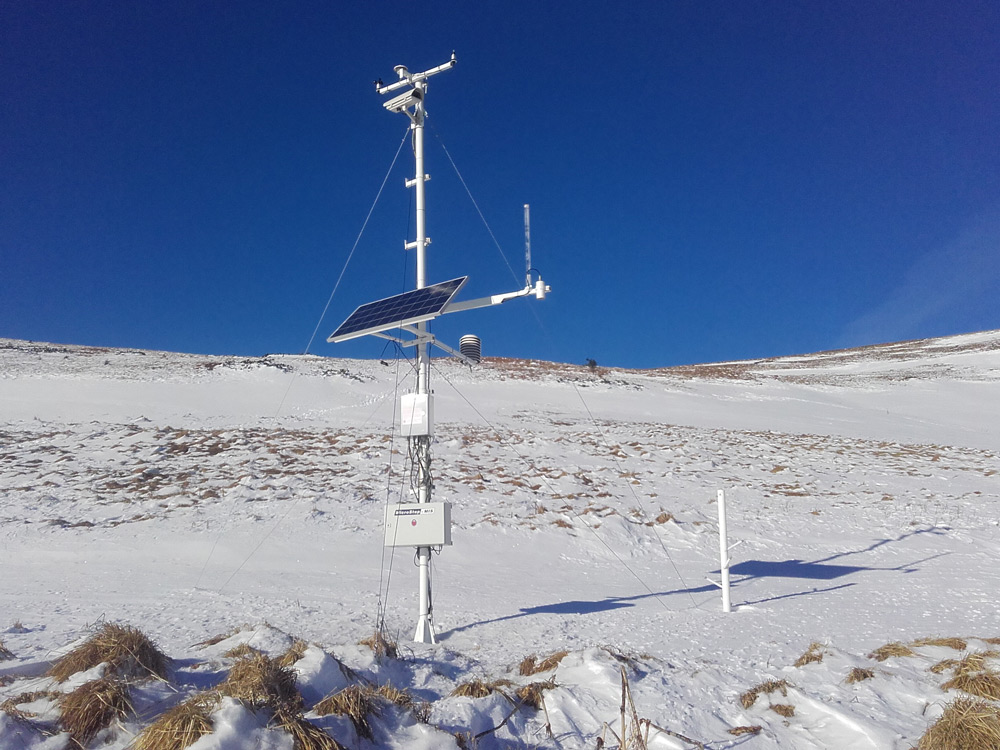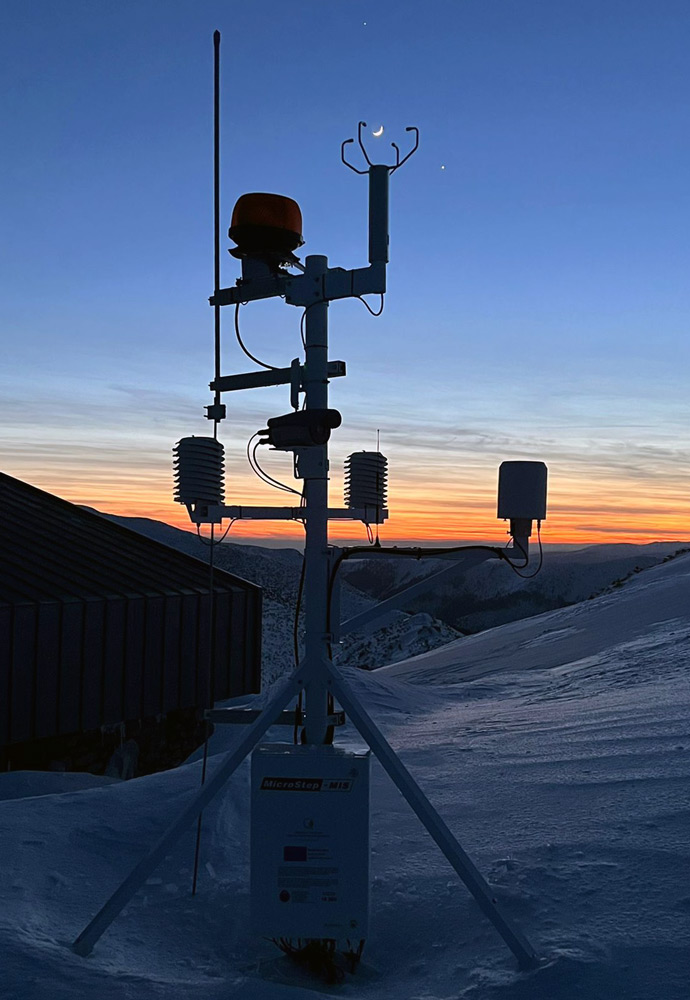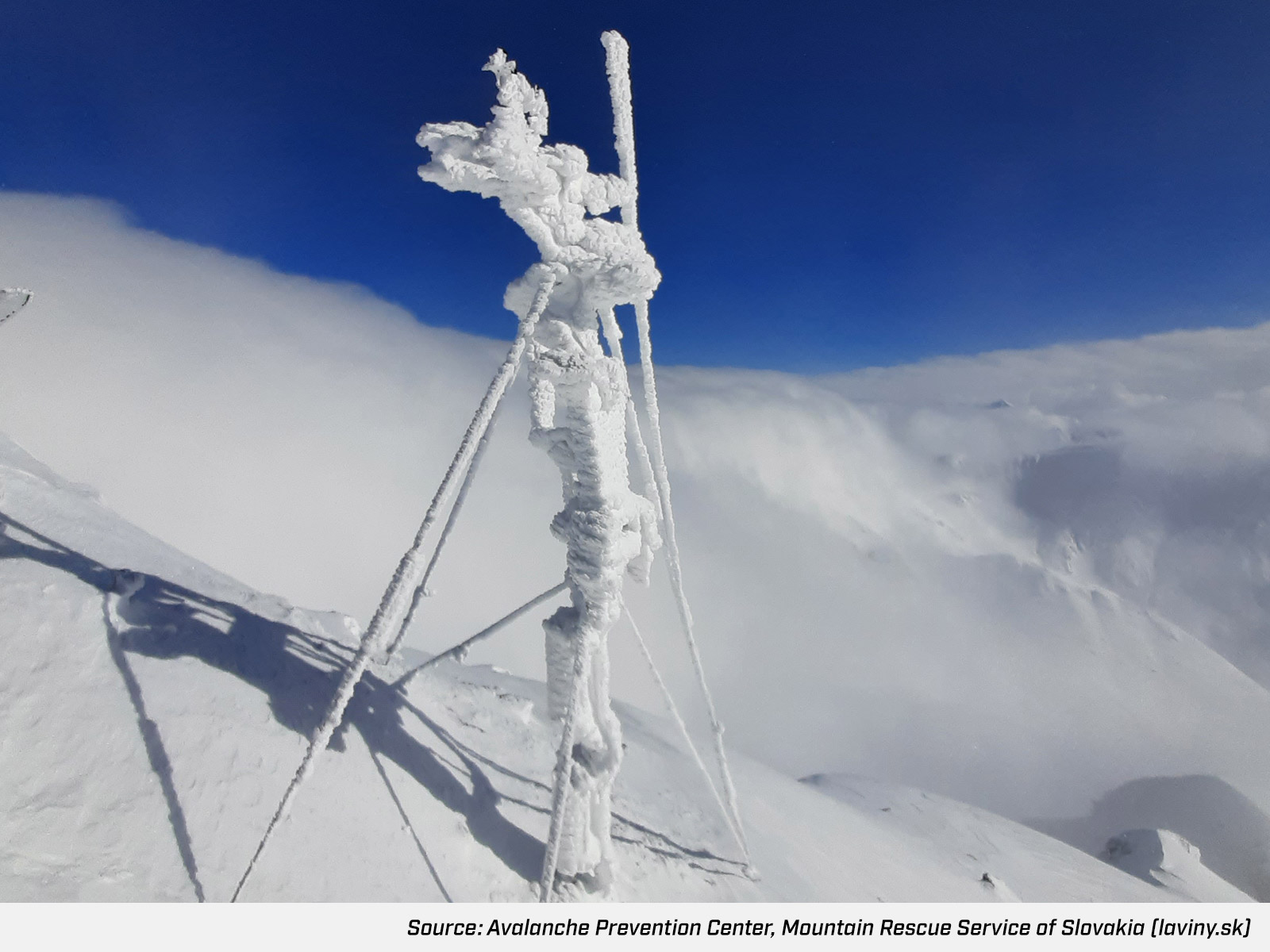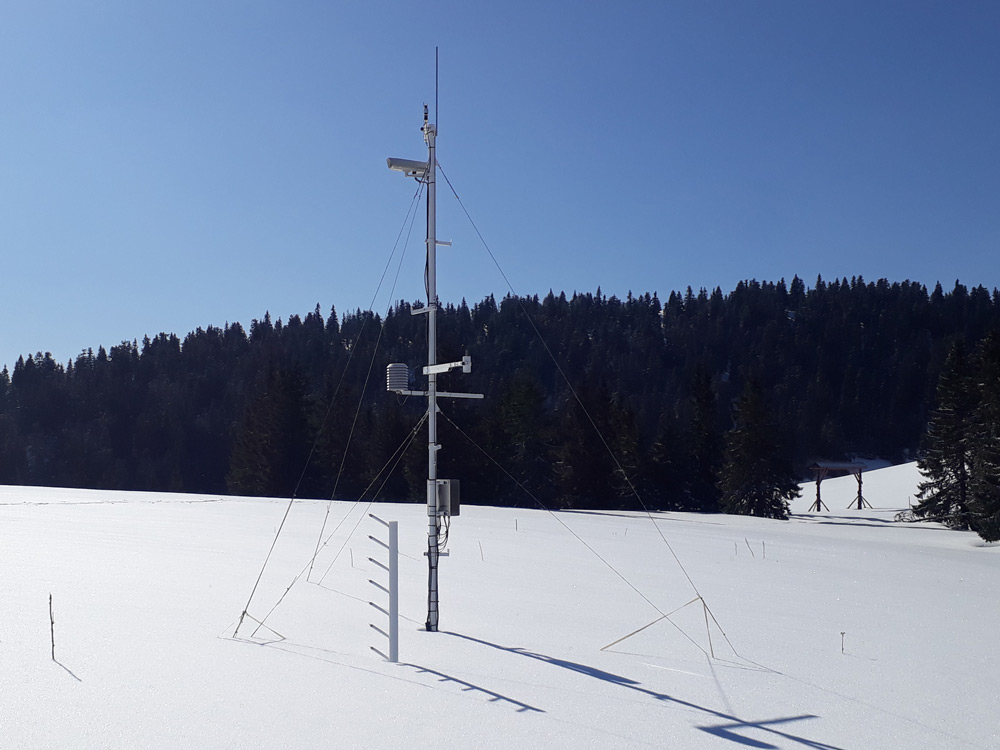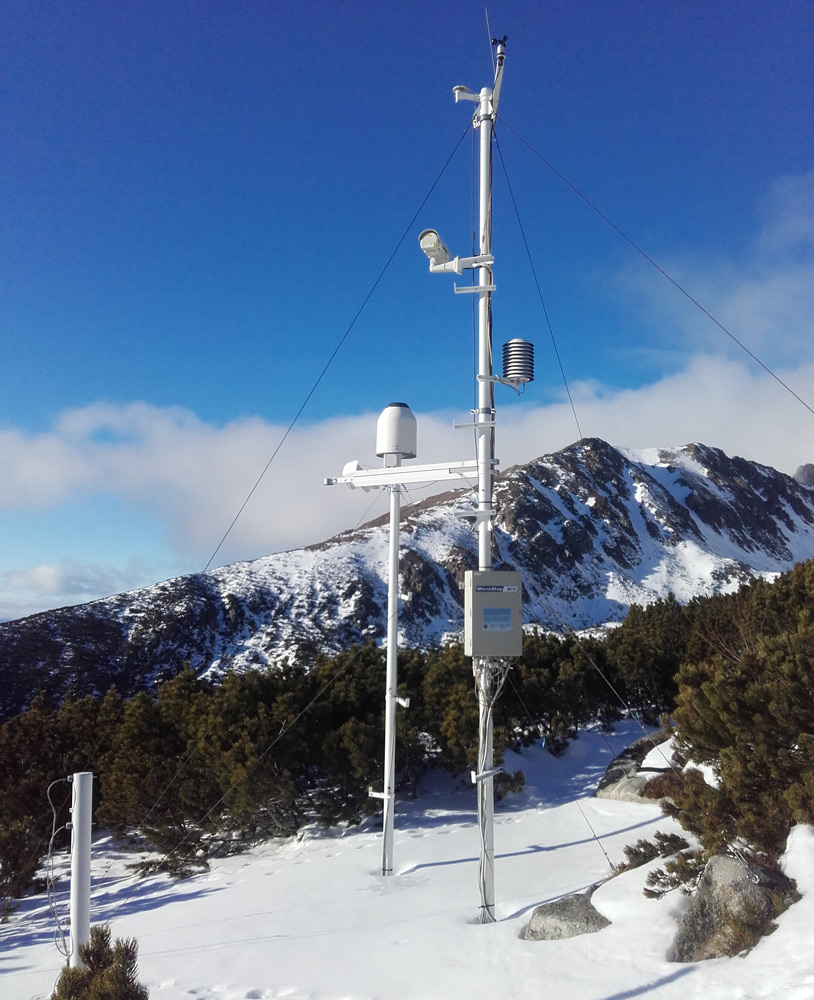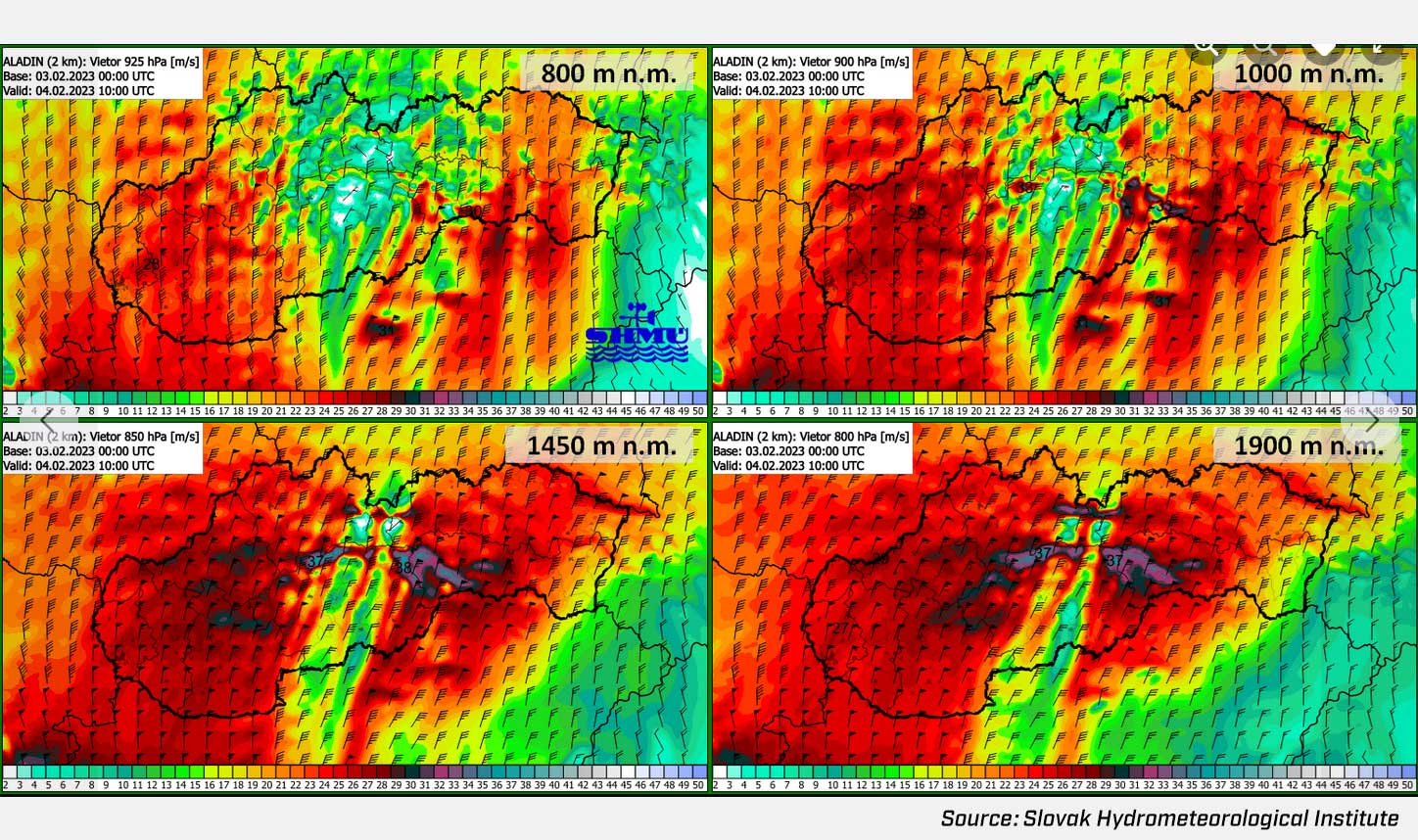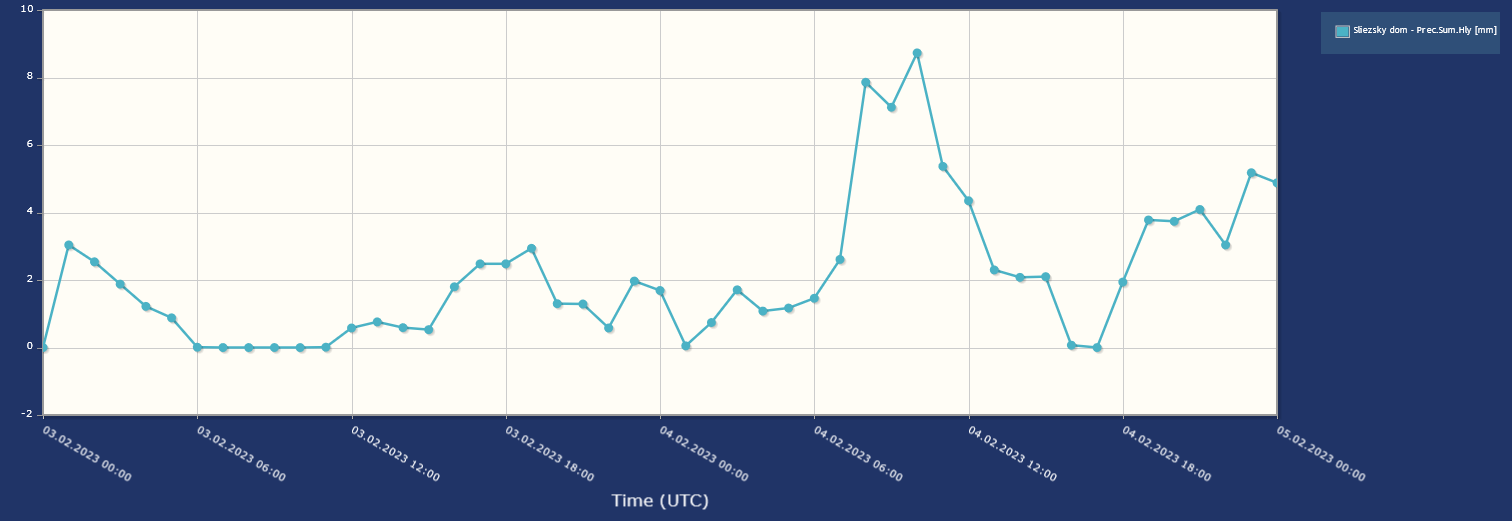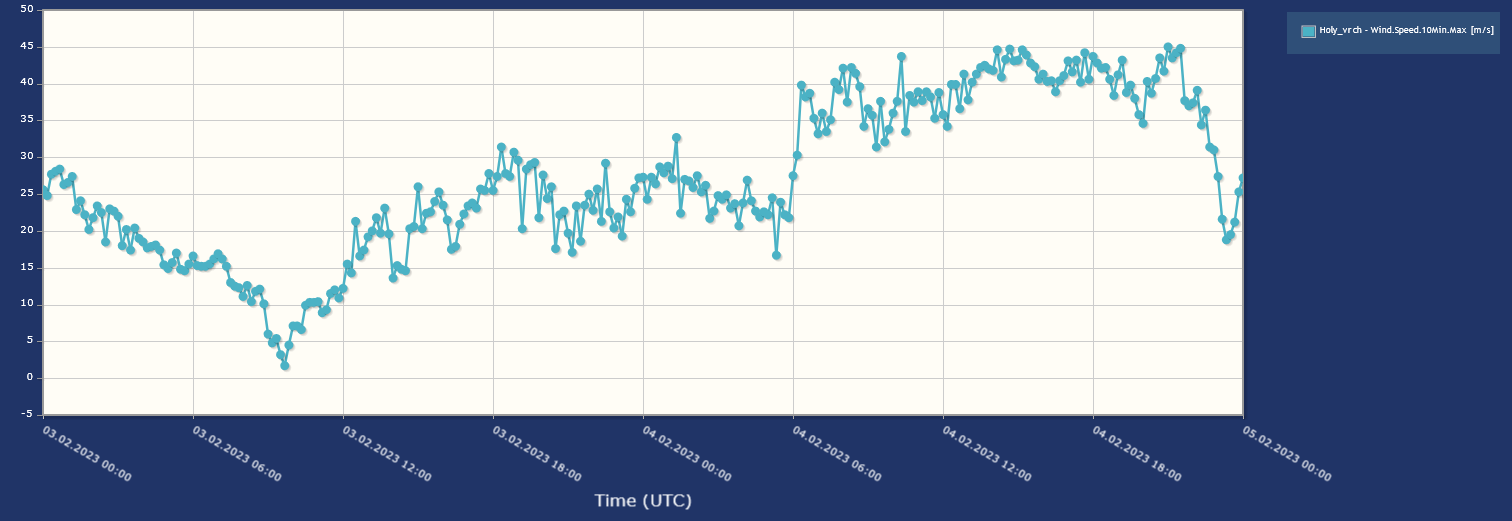On February 3-4, a secondary cyclone approached Slovakia, forming over the Faroe Islands in the trough of the main cyclone centered over Iceland. Gradually filling up, it moved southeast through the southern Scandinavian Peninsula, Poland, and Romania, with a central pressure of 993 hPa.
On the morning of February 4, the cyclone passed through eastern Slovakia, causing a complex of phenomena including warming on February 3, cooling behind the cold front on February 4, heavy snowfall, and strong winds reaching hurricane levels in the mountains. These conditions increased avalanche danger, resulting in the application of the fourth out of five levels of avalanche danger in the High and Western Tatras, Low Tatras, and Mala Fatra.
Heavy snowfall and strong winds peaked on the night of Friday, February 3, to Saturday, February 4, 2023. Precipitation during the passage of the cyclone was recorded in all the mountains of Slovakia, and the snow cover in some places increased by more than 100 cm. At the AWS Skalnaté pleso station, 70.5 mm of precipitation fell on February 3-4, while at the Sliezsky dom station, 104 mm of precipitation fell during the same period. On Saturday, February 4, 2023, a very strong wind blew across the country, reaching the strength of a severe storm in some places. At the Holy vrch station, wind gusts reached 45 m/s (162 km/h) on that day.
The storm had numerous consequences for the country. The Ministry of the Interior of the Slovak Republic recorded more than 80 emergencies due to heavy snow and wind, including impassable roads and difficult access to shops and clinics. In some places, people were left without electricity. The traffic situation was also critical, with eight cars colliding on the D1 highway from Poprad to Presov. Due to zero visibility, strong winds, and heavy snowfall, several sections of the road under the Tatras were blocked, causing problems for cars on the hills and long lines forming. In the High Tatras, the ski resorts in Tatranska Lomnica, Stary Smokovec, and Strbske Pleso had to stop operating due to these harsh weather conditions.
Operational data from automatic weather stations installed by MicroStep-MIS allowed the Mountain Rescue Service to issue timely warnings of high levels of avalanche danger. The effectiveness of the warnings, based on actual observational data, made it possible to reduce the potential damage associated with the storm's passage and also prevented casualties.
